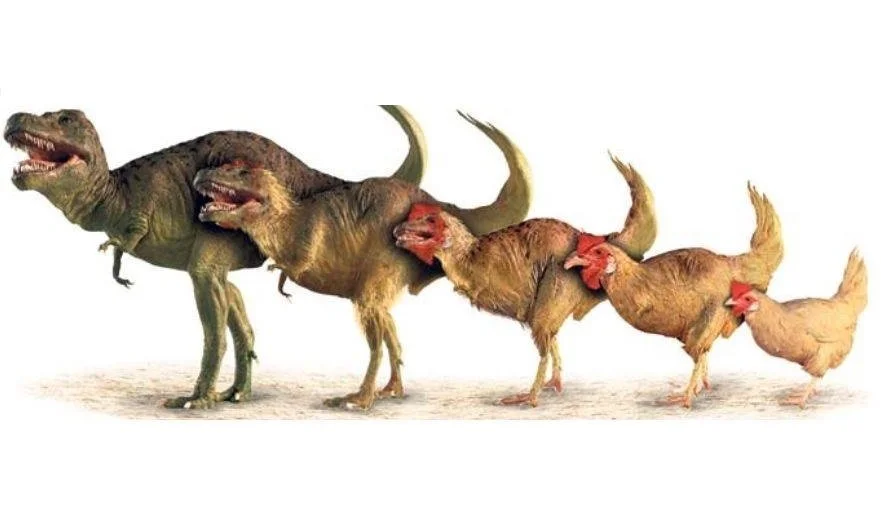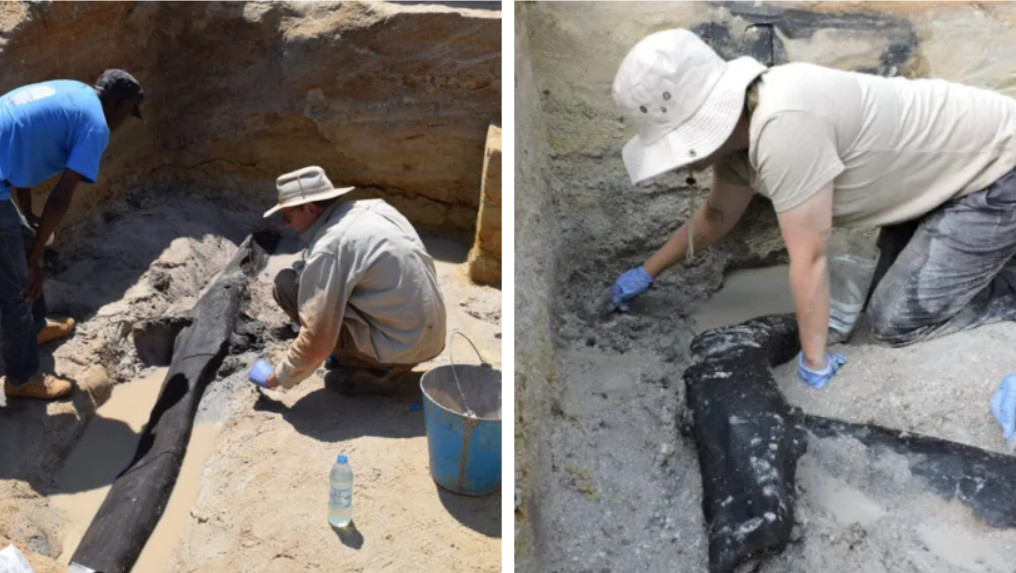The tomb, located on the Giza Plateau, was originally believed by some Egyptologists to be a "fourth pyramid of Giza"
The pyramid of Khentkaus I or step tomb of Khentkaus I is a Fourth Dynasty two-stepped tomb built for the Queen Mother Khentkaus I in Giza. The tomb, built in two phases coinciding with its two steps, was originally known as the fourth pyramid of Giza.
The tomb has a two-stepped superstructure, which can not properly be classified either as a mastaba or as a pyramid. Selim Hassan compared it to Djoser's step pyramid, which had a square base in its early development, to favour a pyramid designation.
In the first phase, a nearly square block of bedrock, around which the stone had been quarried for the Giza pyramids, was utilised to construct her tomb and encased with fine white Tura limestone.
In the second phase, most likely in the Fifth Dynasty, her tomb was enlarged with a large limestone structure built on top of the bedrock block. The Egyptologist Miroslav Verner suggests that this may have been intended to convert her tomb into a pyramid, but was abandoned as a result of stability concerns.
Reconstruction of the Giza Necropolis, Artist: Uvo Hölscher, 1910
South-west of the tomb was a long boat pit, which housed the Night boat of Re. A companion day boat has not been found. A chapel was built into the tomb superstructure, with a large granite entrance bearing the queen's name and titles. One of her titles was of particular interest because it had not been known of prior to its discovery at her tomb.
The chapel connected to a three-niched statuary room to its west, and a long hall to its north. The hall to the north housed two pink granite false doors, below one of which was a sloped passage into the tomb substructure comprising an antechamber and a bisected burial chamber. In the east half of the burial chamber were entrances to six storage magazines, and two more pink granite false doors in its west wall.
The west half of the chamber was once occupied by a large alabaster sarcophagus, fragments of which constituted the only significant finds by Selim Hassan. Carved into the north wall was a shelf which once stored the canopic jars of the burial. A small square niche had been cut into the south wall.
Khentkaus I's mortuary complex
A settlement was built around Khentkaus' tomb, and probably occupied by priests of her mortuary cult until the end of the Sixth Dynasty. The settlement was bounded to the north and south by long perimeter walls running east then south.
Along a causeway leading from the chapel through the town, ten carefully planned homes were built, suggesting that the town was designed and not the result of natural urban development. The town was further outfitted with granaries and a large water tank. To the south-west were Menkaure's valley temple, and an annex described by Hassan as Khentkaus' valley temple.
Location and Excavation
The tomb, located on the Giza Plateau, was originally believed by some Egyptologists to be a "fourth pyramid of Giza". It was identified as a pyramid by John Shae Perring and Colonel Howard Vyse who visited the site in 1837–1838. The site was visited the following year by Karl Richard Lepsius, on sponsorship from King Frederick William IV of Prussia.
He believed the tomb was a private one, and designated it 100 on his map. In 1912, Uvo Hölscher identified the structure as "the unfinished pyramid of Shepseskaf". George Andrew Reisner identified it as a king's pyramid, believing it to be an incomplete construction of Shepseskaf, in Mycerinus, the temples of the third pyramid at Giza (1931).
In 1932, Selim Hassan was able to demonstrate that the tomb belonged to Khentkaus I. The name and titles of the queen were found inscribed on blocks of red granite from the doorjambs of the chapel. Hers was the last royal monument built on the plateau.
Who was Khentkaus I?
Khentkaus I, also referred to as Khentkawes, was a royal woman who lived in ancient Egypt during both the Fourth Dynasty and the Fifth Dynasty. She may have been a daughter of king Menkaure, the wife of both king Shepseskaf and king Userkaf (the founder of the Fifth Dynasty), the mother of king Sahure. Some suggest that she was the regent for one of her sons. Perhaps, in her own right, she may have been the king of Upper and Lower Egypt, which aspects of her burial suggest. Her mastaba at Giza – tomb LG100 – is located very close to Menkaure's pyramid complex. This close connection may point to a family relationship. Although the relationship is not clear, the proximity of the pyramid complex of Khentkaus to that of king Menkaure has led to the conjecture that she may have been his daughter.
Khentkaus depicted on her tomb
Khentkaus's burial complex confirms her royal status. Some of her titles are ambiguous and open to interpretation. She appears to have served as regent and may have taken the title of king. On a granite doorway leading into her tomb, Khentkaus I is given titles that may be read either as mother of two kings of upper and lower Egypt, as mother of the king of upper and lower Egypt and the king of upper and lower Egypt, or, as one scholar reads it, the king of upper and lower Egypt and the mother of two kings of upper and lower Egypt. Furthermore, her depiction on this doorway also gives her the full trappings of kingship, including the false beard of the king. This depiction and the title given have led some Egyptologists to suggest that she reigned as king near the end of the fourth dynasty.
That she was the daughter of Menkaure is speculated widely. Much evidence supports the idea. Khentkaus may have been married to king Userkaf and may have been the mother of Sahure and Neferirkare Kakai. Egyptologist Miroslav Verner has stated that it is more likely, however, that Sahure was a son of Userkaf and his wife Neferhetepes. He also suggested that Khentkaus was the mother and regent for her son Thamphthis and the mother of Neferirkare Kakai.
Manetho's King List has Menkaure and Thampthis reigning in the Fourth Dynasty, which ties Khentkaus to the end of the Fourth Dynasty, The suggestions of her marriage to Userkaf and having been the mother of Sahure, tie her to the Fifth Dynasty as well.














